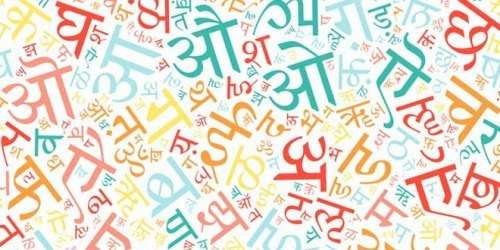Are we truly accepting and propagating Hindi?
Are we truly accepting and propagating Hindi? Has Hindi been accorded its due place? Is there no further political will to do anything for the language beyond the annual ritual because our political motifs are fulfilled by the very commemoration of this day?

Like the ghost in The Conjuring, English in India is ubiquitous and indispensable yet feared and wished dead. And what better day than Hindi Divas to talk about the pointlessness or multi-pointedness of ritual commemoration rather than celebration of Hindi that fuels more the arduous report filing work of government offices across the country than actually doing good to Hindi or to any other language in India.
Are we truly accepting and propagating Hindi? Has Hindi been accorded its due place? Is there no further political will to do anything for the language beyond the annual ritual because our political motifs are fulfilled by the very commemoration of this day?
Hindi Divas is an annual day celebrated on 14 September in India because it was on this day in the year 1949 that the Constituent Assembly of India adopted Hindi (written in Devanagari script) as the official language of India under the Article 343 of the Indian Constitution. At present, there are 22 Scheduled languages of India. Hindi and English are the two languages officially used at Union Government of India level. Of the several staunch and unswerving supporters of Hindi was Beohar Rajendra Simha. His efforts bore fruits when Hindi was adopted as the official language on his 50th birthday, 14 September 1949. Since then this day has been celebrated as the “Hindi Divas”.
Our outlook and mental attitude towards Hindi are highly prejudiced and biased. Instead of being a lived culture Hindi has occupied a place where it has become no less than a relic that needs to be taken care of least it loses its place. Unlike Sanskrit, Hindi is alive and kicking but it is infantilised in juxtaposition to English. The utility function of Hindi is increasingly becoming negligible because its knowledge is not a guarantee for employment in the technology driven competitive world. One needs to introspect to ask how far is the language “relevant”. In place of stringent policies to extricate Hindi from the clutches of colonial language an innocuous Hindi Divas would only add to the plight of the language and it will be relegated to a day of Hindi Speech and Essay Writing Competition only. Hindi is a carrier of our culture and like yoga it can be propagated and accepted but not without strong political will.
In the college where I teach, every student speaks Kangri (a Western Himalayan dialect of Pahari), converses in Hindi in college with peers and teachers and aspires to speak English fluently one day. English is the only aspiration. Of the many student I informally interviewed regarding their thoughts on English not even one student denied his/her yearning, craving and desire to not learn but master English.
The lack of knowledge of English instils shame in the minds of innocent rural students and their inability to converse in English has made them internalise the fact that Hindi occupies a secondary position. Such is the “durgati” and “badahaalee” of Hindi. Not even one student happened to choose English as the main subject this semester.
Had it not been for the Compulsory Courses in English, and Environmental Science course under the Ability Enhancement Compulsory Courses which I teach in “Hindi Medium”, I would have been a surplus and a useless teacher. Looking at such ground realities about Hindi in our country, it cannot be denied that it continues to suffer a secondary status and suffers social and communal neglect. We have gained our freedom but our language is still in chains and inextricable mental bondage.
Our country cannot truly progress without keeping in mind the rural population. In order to tap into the full relevance of Hindi in the present context one has to keep in mind that we are traversing the digital era that is unexpectedly moving towards neither Hindi nor English but Hinglish. Hindi related activities in schools and colleges and the arduous report filing job in school and college magazines, and newspapers are diligently looked after on Hindi Divas without questioning whether it’s doing any good for Hindi language.
Many universities run remedial courses in English. The word “remedial” itself is indicative of a malaise that runs deep in our psyche. Remedy is required where there is disease. Is lack of knowledge of English a disease or handicap that such courses claim to correct. Probably yes. The government needs to take one step every year in making higher education available in Hindi be it Science, Engineering and other areas that are English dominated. First and foremost, Hindi needs to be extended to the area of technology. Translation in the need of the day. Without such steps Hindi Divas becomes nothing but an official formality.
(Dr. Sapna Dogra completed her B.A and M.A. in English Literature from University of Delhi. She holds a PhD from Jawaharlal Nehru University. She is presently working as an Assistant Professor in the Department of English in the Government College Baroh, Kangra, Himachal Pradesh. Her research interests include Folklore Studies, Translation Studies, Indian English Writing, Hindi Literature and Popular Literature. She can be reached at sapnardm@gmail.com.)
To join us on Facebook Click Here and Subscribe to UdaipurTimes Broadcast channels on GoogleNews | Telegram | Signal


